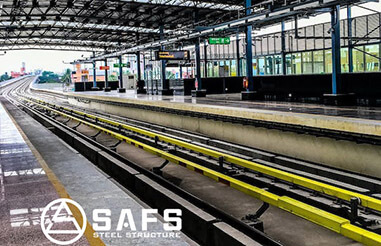Dapeng Town Industrial Park, Tongshan District, Xuzhou City, Jiangsu Province, China
Steel structure engineering buildings can be seen in many places. However, the surface of the steel structure needs to be anti-corrosion and surface treated to ensure the quality of the steel structure surface. The following steel structure warehouse will take a look at the anti-corrosion methods and surface treatment of steel structures.
1. Metal protective layer: The metal protective layer is formed on the metal surface that needs protection by electroplating, spraying, chemical plating, hot plating and permeation plating, etc., using metal or alloy with cathode or anode protection to isolate the metal from the contact with the corrosive medium, or using electrochemical protection to protect the metal, thereby preventing corrosion.
2. Chemical protective layer: A compound film with corrosion resistance is generated on the surface of the steel material by chemical or electrochemical methods to isolate the contact between the corrosive medium and the metal to prevent corrosion of the metal.
3. Non-metallic protective layer: Use coatings, plastics, enamel and other materials to form a protective film on the metal surface by brushing and spraying, so that the metal is isolated from the corrosive medium, thereby preventing the corrosion of the metal.
Steel surface treatment:
After steel processing and before leaving the factory, the surface of the component will inevitably be stained with pollutants such as oil, moisture, dust, and surface defects such as burrs, iron oxide, and rust.

From the main causes of steel structure corrosion mentioned above, we know that the content of pollutants is an important factor affecting the degree of atmospheric corrosion, and surface dirt will seriously affect the adhesion of the coating on the steel surface, and cause the rust under the paint film to continue to expand, resulting in coating failure or damage, and unable to achieve the expected protective effect.
Therefore, the quality of steel surface treatment has a greater impact on the protective effect and life of the coating than the performance differences of the coating itself, and should be taken seriously.